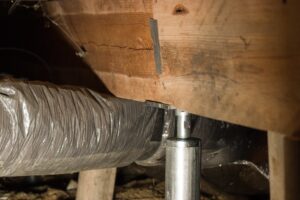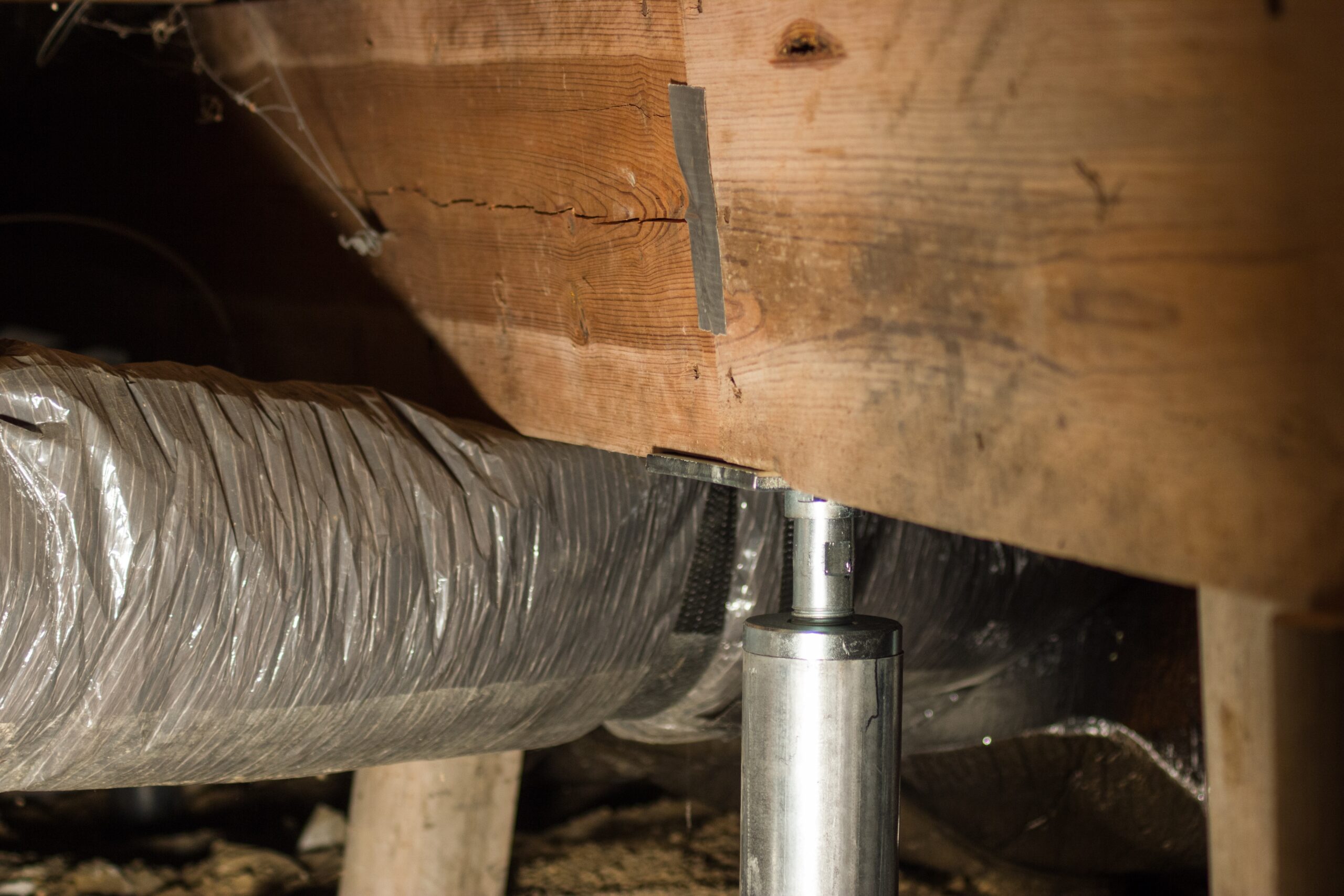Sagging floors are often a warning sign of hidden structural damage underneath homes in Alabama. If you notice that your floors are starting to slope, or feel soft or springy in spots where they used to feel solid, it’s a good idea to take a closer look and see what’s going on. Symptoms like this tend to get worse over time.
Depending on the age of the house, local soil and weather conditions, and the relative quality of construction methods and materials, floors above crawl spaces and basements tend to be more at risk for sagging. With the right professional help, you’ll be happy to know that there are affordable ways to repair sagging floors and restore “like new” stability to your home.
To help you find out if you have a problem, especially if you own an older home, we’ve put together a few basic facts about what causes floors to sag or bounce, what to look for, and the steps you should take if you suspect trouble.
Five common causes of sagging floors in Alabama homes:
-
Have there been any alterations to your house, especially new routing cuts for wires, pipes or heating and cooling ductwork? If any construction best practices were skipped, the support members holding up your floors could be compromised. Notches shouldn’t be bigger than one quarter of the depth of a joist or beam, and you don’t want holes anywhere in the middle third of any load-bearing member.
-
Is there unexpected moisture or humidity in your crawl space or basement? Over time, accumulated moisture can cause wood posts and beams to break down and lose their load-bearing capacity. Eventually, the house will start to sink and settle around these weak spots causing stress in other parts of the structure, possibly including interior finish materials.
-
Are there unwanted visitors underneath your house? Where there’s moisture, there may also be pests. Destructive varieties like termites, carpenter ants and certain kinds of wood boring beetles are attracted to damp, protected spaces. Once they find a comfortable place in your crawl space or basement, they can multiply quickly and start doing serious damage to the wooden structures holding up your floors.
-
Were the structures supporting your floors properly installed by the builder? Pier-and-post supports are a common way to support residential floors, especially in combination with a crawl space home. There’s a right way to build them, and unfortunately there are also shortcuts contractors use to save time and money. Poorly installed posts can rot and weaken before their time, leaving critical beams and joists unsupported.
-
Was the soil beneath your house properly graded and compacted? The soil holding up your foundation and floor supports could sink, shift or settle because of erosion or hydrostatic pressure around your house, or because of poor construction methods. A related cause might be that masonry or concrete supports were spaced too far apart by the original builder, allowing the beams and joists above to fail.
Any one of these alone, or in combination with other contributing factors could be the root cause behind a sagging floor. A qualified Project Planner can quickly and efficiently help you find the source of the trouble and recommend remedies that best fit your situation and budget.
How to repair a sagging floor
There are several time-tested methods for restoring sagging floors to their original straight and level condition. While they all offer different advantages, some take more time and money than others. It’s also important to consider how much disruption each method might cause to your property and your lifestyle while repairs are underway.
-
Jacking has been a go-to remedy for many years, but it’s a brute force approach. It also has to be done very slowly to avoid cracking surrounding materials in your house. The bigger the sag, or “deflection,” in your floor, the longer it will take to raise one or more carefully placed jacks intermittently until the floor is stable and level again.
-
Another approach is to add metal or plywood reinforcements to the damaged area of the support member, after realigning it with jacks or temporary supports. These reinforcing materials have to be placed and installed very carefully, and according to strict engineering guidelines, in order to effect a lasting repair.
-
Instead of spot repairs, some companies recommend bolting long sections of identical new material along the entire failed beam or joist to restore its original strength and alignment. Again, this can be a risky approach unless you can be sure you’re not replicating the original design fault that may have caused the failure in the first place.
-
Other repair contractors combine the new material in option three (above) within a sandwich of steel or plywood reinforcements called “flitch plates.” While this approach can often be successful, it may consume a lot of expensive material, take a considerable amount of time, and it leaves you with the same engineering risks as some of the less invasive measures.
 The method we use at SouthernDry quickly and cost-effectively restores the strength and alignment of your floor.
The method we use at SouthernDry quickly and cost-effectively restores the strength and alignment of your floor.
Our SoDry galvanized steel jacks are easily adjustable and can support a tremendous amount of weight. This approach gives you a more permanent solution for sagging floors, and ensures that your crawl space is structurally sound for many years to come.
The SoDry system can also be paired with crawl space encapsulation for a cleaner, healthier crawl space environment.
Alabama homeowners choose SouthernDry over “big box” companies because we’re obsessed with customer satisfaction and quality. This is our family business, so our reputation is on the line with every repair. We give you personalized attention from the initial estimate to final clean-up at the end of the job. We’ll answer your questions and stick with you until the job is done to your satisfaction.
Call us today for a free professional consultation about your sagging floor or crawl space situation.









